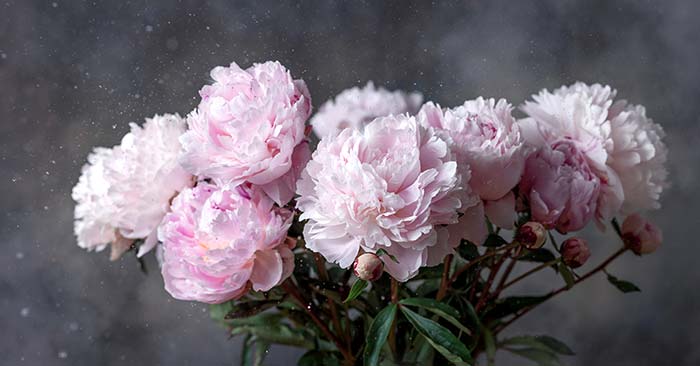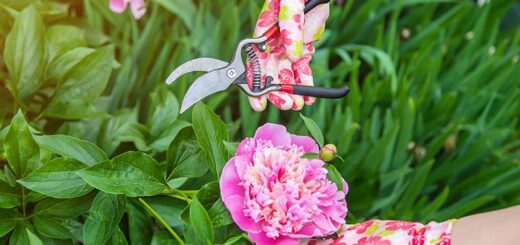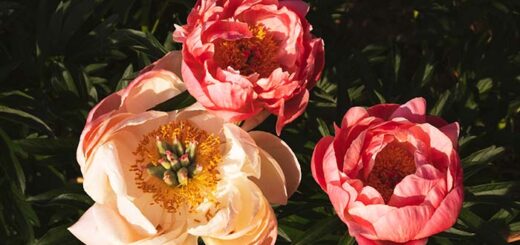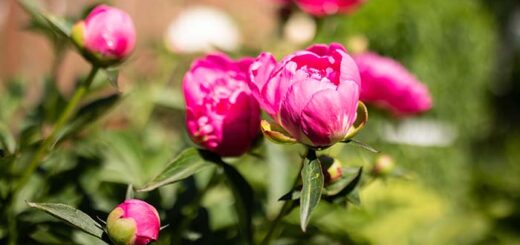Peonies Care for Winter: Ensuring Your Blooms Thrive Through the Cold Months
Peonies are cherished for their breathtakingly beautiful blooms and robust nature, making them a favorite in many gardens. However, as winter approaches, these stunning flowers require special attention to survive the harsh conditions and return vibrant in the spring. In this comprehensive guide, we’ll delve into the intricacies of peony care for winter, covering everything from protection methods to indoor growing techniques.
Protecting Peonies in Winter
When winter arrives, the primary concern for peony gardeners is protecting these beloved plants from the cold. Here are several strategies to shield your peonies from the winter chill:
Mulching: One of the simplest yet most effective ways to protect peonies is by applying a thick layer of mulch around the base of the plant. This helps insulate the roots, maintaining a stable temperature and preventing them from freezing. Organic materials like straw, leaves, or wood chips are ideal choices. Aim for a layer about 2-3 inches thick, ensuring it covers the root zone but does not smother the plant’s crown.
Snow Insulation: Believe it or not, snow can act as a natural insulator for peonies. Snow accumulating over the mulch provides extra protection against extreme temperatures. Avoid removing snow from your peony beds; let it build up naturally to offer additional warmth.
Wind Barriers: Consider erecting wind barriers around your peony garden in areas with strong winter winds. These can be made from burlap or other breathable materials and will help reduce the wind’s impact, preventing damage to the plant’s structure.

Image Source: Envato Elements
Cutting Back Peonies for Winter
Properly cutting back peonies in preparation for winter is crucial for the health and vigor of the plant. Here’s how to do it:
Timing: The best time to cut back peonies is in late fall after the first frost has blackened the foliage. This indicates that the plant has entered dormancy and is safe to prune without causing harm.
Technique: Cut the stems to about 2-3 inches above the ground using clean, sharp garden shears. This removes any diseased or dead material and helps prevent pests and diseases from overwintering in the debris. Dispose of the cut foliage away from the garden to avoid any potential disease spread.
Clean-Up: After cutting back, thoroughly clean the area around your peonies. Remove any fallen leaves or plant debris, as these can harbor pests and diseases that may affect your peonies come spring.
Peonies Winter Care in Pots
Caring for potted peonies during winter requires a slightly different approach compared to those planted in the ground:
Insulating the Pot: Potted plants are more susceptible to freezing temperatures since their roots are above ground. To insulate, wrap the pots with bubble wrap or burlap, securing it with twine. Additionally, placing the pots close together in a sheltered location, such as against a house wall, can offer extra protection.
Moving Indoors: Consider moving potted peonies into an unheated garage or basement in regions with extremely harsh winters. This provides a stable, cold environment that protects the plants from freezing while keeping them dormant.
Monitoring Moisture: Potted peonies still need occasional watering during winter. Check the soil moisture every few weeks and water sparingly if it becomes too dry, ensuring not to waterlog the roots.
Watering Peonies in Winter
Watering peonies during winter is a delicate balance. While these plants require less water during dormancy, they still need some moisture to survive:
Checking Soil Moisture: Regularly check the soil moisture level around your peonies. The soil should be slightly damp but not waterlogged. Overwatering can lead to root rot, especially during colder months when evaporation is minimal.
Mulching: As mentioned earlier, mulch is crucial in winter care. It helps retain moisture in the soil, reducing the need for frequent watering. However, ensure the mulch does not cover the plant’s crown, which can lead to rot.
Avoiding Waterlogging: If you experience heavy winter rains, ensure your peonies’ planting area has good drainage. Waterlogged soil can be detrimental, causing the roots to rot and the plant to suffer.
Growing Peonies Indoors
Growing peonies indoors over winter can be a rewarding experience, allowing you to enjoy their beauty even in the coldest months. Here’s how to do it:
Selecting the Right Variety: Choose peony varieties well-suited for indoor growth. Herbaceous peonies and particular tree peonies can adapt better to indoor conditions.
Planting: Use a large, deep pot with suitable drainage holes. Fill it with a high-quality potting mix with good aeration and moisture retention. Plant the peony tubers just below the surface, with the eyes facing upwards.
Light and Temperature: Place the pot in a location that receives bright, indirect sunlight. Peonies prefer cooler temperatures, so aim for a spot between 60-70°F (15-21°C). Avoid placing them near heating vents or drafts.
Watering and Humidity: Water the indoor peonies when the top inch of soil feels dry. Ensure the pot has good drainage to prevent waterlogging. In winter, indoor air can be dry, so consider using a humidifier or placing a water tray near the plants to maintain humidity.
Steps to Care for Peonies in Winter
Summarizing the above points, here are the essential steps to care for your peonies in winter:
- Mulching: Apply a thick layer of mulch around the base of the peonies to insulate the roots.
- Cutting Back: Trim the stems 2-3 inches above the ground after the first frost.
- Protecting Potted Peonies: Insulate the pots with bubble wrap or burlap, and consider moving them to a sheltered location.
- Watering: Monitor soil moisture and water sparingly to avoid waterlogging.
- Indoor Growing: Select suitable varieties, provide adequate light and temperature, and maintain proper watering and humidity.
- Cleaning Up: Remove any fallen leaves or debris around the plants to prevent pests and diseases.
FAQs on Peonies Care for Winter
Q: Do peonies need to be covered in winter?
A: While peonies don’t necessarily need to be covered, applying mulch around the base can protect roots from freezing temperatures.
Q: Can I leave my peonies in the ground over winter?
A: Yes, peonies are hardy perennials and can remain in the ground over winter with proper care, including mulching and cutting back.
Q: Should I fertilize my peonies in winter?
A: No, it’s best to fertilize peonies in early spring. Fertilizing in winter can promote growth at an inappropriate time.
Q: How do I know if my peonies are dormant?
A: Peonies enter dormancy after the first frost when the foliage turns black and dies back. This is the best time to cut them back.
Q: Can I transplant peonies in winter?
A: It’s best to transplant peonies in the fall before the ground freezes or in early spring when new growth begins.
Q: How do I prevent diseases in peonies over winter?
A: Remove and dispose of all foliage and plant debris in the fall to prevent diseases from overwintering in the garden.
Q: What if my area has mild winters?
A: Peonies may not need as much protection in regions with mild winters. Mulching lightly and ensuring good drainage should suffice.
Q: Can I use synthetic mulch for peonies?
A: Organic mulches like straw, leaves, or wood chips are preferable as they provide insulation and improve soil health as they decompose.
Q: How do I deal with pests on peonies in winter?
A: Clean up all plant debris and consider using horticultural oil on the soil surface to smother any overwintering pests.
Q: Are there specific peony varieties that handle winter better?
A: Herbaceous and intersectional (Itoh) peonies are generally hardy and well-suited to withstand winter conditions.
Conclusion
Winter care for peonies is essential to ensure these beautiful plants return each spring with their stunning blooms. You can protect your peonies from harsh winter conditions by following the proper steps, such as mulching, cutting back, and ensuring proper watering. Whether they’re planted in the ground or pots and whether you choose to grow them indoors or outdoors, taking the time to care for your peonies in winter will reward you with healthy, vibrant flowers year after year.
References:
Plant Addicts: Peony Winter Care


